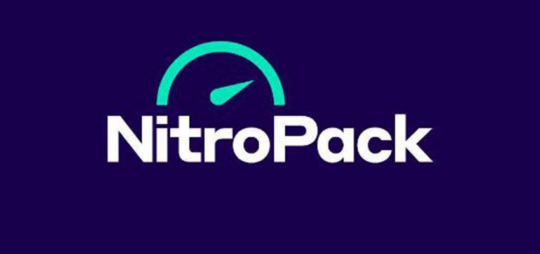
Essential WordPress Plugins for Marketers
WordPress is a powerful and flexible content management system (CMS) that powers more than 40% of websites worldwide, from personal blogs to complex eCommerce stores.
A key feature of WordPress is its ability to be customized and enhanced through plugins, which are small software add-ons designed to expand WordPress’s inherent capabilities. With thousands of plugins available, users can effortlessly add new features, improve performance, and optimize SEO—often without needing to write a single line of code.
This article highlights essential plugins that can help you build high-quality, engaging, and efficient websites using WordPress.
- Essential WordPress plugins
- Speed and optimization plugins
- SEO plugins
- Social media plugins
- Lead generation plugins
Essential WordPress plugins

Nitropack
NitroPack is a powerful optimization plugin for WordPress that significantly improves website loading speed and performance. It combines features like caching, image optimization, and code minification into a single, easy-to-use tool, helping sites achieve faster load times and higher scores on performance tests.
By streamlining these processes, NitroPack enhances user experience and can boost search engine rankings, making it a valuable asset for any WordPress website.

ACF
Advanced Custom Fields (ACF) is an essential plugin for WordPress that allows users to easily add custom fields to posts, pages, and custom content types. It gives developers and site owners greater flexibility to create and manage complex content structures without touching core code.
By streamlining custom field management, ACF makes it easier to build dynamic, content-rich WordPress sites tailored to specific needs.

Contact Form 7
Contact Form 7 is a free plugin and the go-to form-building solution for many WordPress users.
It gives marketers the ability to easily create and manage contact forms that may be placed anywhere in your site using shortcodes.
Forms may be used for a variety of functions, from marketing surveys to simple contact forms, and be customized to suit your needs.

Google XML Sitemaps
XML Sitemaps are vital to your site’s SEO. These will directly communicate with search engines like Google and Bing and help them better index your content. More crucially, sitemaps help search engines validate that your content is original and authentic.
The Google XML Sitemaps plugin provides an easy-to-use interface for creating XML sitemaps automatically.
Plugins that optimize site speed

WP Smush
Another way to help your site speed is by decreasing the file sizes of your images.
WP Smush, developed by WPMUDEV, makes that super-easy and automated. The free plan is pretty limited in terms of bulk “smushing” but it’s an amazing resource to have when uploading larger-than-usual image files.
Images are usually decreased by 50%-80%.

Lazy Load
If your posts have loads of media in them, you’d benefit a lot from using Lazy Load.
Instead of loading all your images at once, Lazy Load will load images only when users reach them on the page. This dramatically increases site speed and reduces churn rates.
Plus, it’s completely free to use!
Plugins that help your site rank on search engines

Yoast SEO
Yoast’s SEO plugin is the most popular search engine optimization plugin in WordPress’ repository—and for good reason.
Yoast squeezes in plenty of robust features to its SEO plugin. Chief among them is the Page Analysis feature, which offers users AI-powered suggestions to better optimize their posts and pages, effectively saving you from common SEO oversights that ultimately cost you potential traffic and leads.

Google Analytics by MonsterInsights
Don’t you just hate how pesky the installation process of Google Analytics is?
Installing this plugin is much easier than installing G.A. by editing your site’s code and copy-pasting your tracking code—a process that requires a bit more effort.
Google Analytics by MonsterInsights makes it easy to install G.A. to your WordPress site and allows users to review and manage metric dashboards, saving you a ton of time. What’s more, the plugin itself is intuitive and requires no advanced technical skill at all.

Redirection
Sometimes your readers might encounter errors on your site. That’s thanks to a number of factors, often some that are beyond your control (misspelled URLs, broken links, etc.).
The Redirection plugin allows you to create and manage 301 redirects, track 404 errors, and make sure that no reader bounces off your site due to a broken link. It’s free to use, well-documented, and championed by a lot of digital marketers.
Plugins that help you nail social media

Sumo
Sumo is actually a whole suite of tools designed to help you grow your traffic, including email forms and pop-ups, but their tools for social media are especially attractive and powerful.
Their free “Share” tool offers users social media buttons with various placement options—the left side of the window, at the start of the article, or the end of the article—making your blog posts optimized for social shares.
Sumo’s free plan has limited features, but they should be enough for basic marketing functions.

MashShare
A good alternative to Sumo is MashShare, a social sharing plugin that chucks Mashable-esque sharing buttons on your blog posts. The buttons are bold and quite pronounced, which can be plenty effective.

Click to Tweet
Click to Tweet is a favorite tool by a lot of digital marketers. It gives you the ability to create “tweet cards” that your readers can click on to tweet. You can add a @mention or #hashtag too.
The likes of Neil Patel and Pat Flynn used this quite a lot in their earlier years, and it’s still effective today.
Plugins that help you nurture leads and prospects

Contact Form Builder
Developed by Hubspot, Contact Form Builder is a free, all-in-one lead management plugin that offers high-level tracking on your visitors’ behavior. This helps you make more informed content marketing decisions to increase your conversion.
When your leads convert, the plugin will actually add to your Hubspot CRM. If you’re using Hubspot as your favored CRM resource, this is perfect.

OptinMonster
You can ask any marketer and email still sits as one of, if not the most effective marketing channels they use. As such, you should take a second look at growing your email list.
Enter OptinMonster: perhaps the most robust list-building marketing solution for WordPress users. The plugin itself offers a variety of email forms and integrates with a host of email marketing providers such as Mailchimp, AWeber, ConvertKit, and more.

Thrive
Like OptinMonster, Thrive offers a host of email marketing solutions to marketers who use WordPress. The focus this time is conversions, with Thrive offering highly optimized form designs and high-level marketing features.

Bloom by Elegant Themes
Bloom, developed by Elegant Themes, is a great email marketing plugin especially when paired with Elegant Themes’ Divi theme/plugin features.
You can create some amazing designs that fit your site’s branding.
Over to you
One of the beauties of using WordPress for your website is that you can always resolve any pain point in marketing—or any pain point in your business for that matter—using plugins.
The list of plugins above should have you set for most projects you might undertake using WordPress.
Best of luck on your build!
